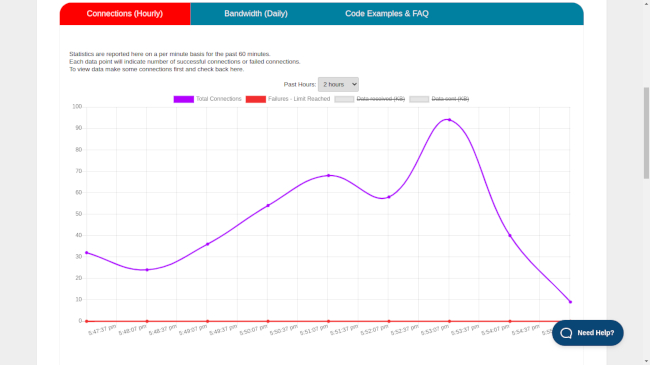What is a sales plan and how to create one in 5 steps?
Creating a sales plan is easy with this guide

Sales are the lifeblood of many businesses - but they aren’t easy to come by. There are a whole host of business tools, from the best CRM software to lead generation solutions and task management tools, that are aimed at supercharging sales - and it’s easy to see why. Sales lead to revenue and that ultimately determines if a business is successful or not.
Sales are not merely the result of efforts by the sales team, however. Although there are solutions aimed directly at these individuals like sales CRMs, sales are also supported by good work from the marketing team, as well as the general well-rounded functioning of the entire business.
The importance of sales, however, has led organizations to think of ways that theft can improve their conversion rates. Investing more resources in the sales process is one method, of course, but coming up with a clear plan is another.
A sales plan is increasingly used by businesses alongside software like cloud CRM solutions to give them both a human and technological edge where sales are concerned. If you want to benefit from such a competitive advantage, the below article explains exactly what a sale plan is and how you can create one in five easy steps.
Reader Offer: Save 18% on Monday.com annual memberships
Monday.com is an easy-to-use and customizable work management platform, enabling teams of all sizes to plan, manage and centralize work. Get started now and boost your team's communication and productivity.
Preferred partner (What does this mean?)
What is a sales plan and how to create one in 5 steps?
Step 1: Outline your vision
There’s not much point in creating a sales plan unless you have a clearly defined goal you are aiming at. Simply stating, “I want more sales” is vague and will lead to processes and tasks being undertaken without direction. So what is your overarching goal with your sales plan?
To ensure you focus on the right goal, be sure to involve all the relevant stakeholders. Talk to your sales managers and their employees - the people that actually make the sales calls and log the outcomes using your business tools, like your cloud CRM software and collaboration apps. If your goal is determined by a small group of stakeholders, it is likely to be misguided
Get input from both sales and marketing personnel, as well as customer support. And don’t forget to include the customers themselves. These are the people ultimately responsible for conversion. Talk to them about why they decided to make a purchase, as well as any pain points or reservations. Competitor research could also be helpful when coming up with a mission statement. If there’s another store that you consider a rival, what ecommerce platform do they use? How do they position their marketing efforts? Learn as much about them as you can before deciding on your ultimate aim.
Sign up to the TechRadar Pro newsletter to get all the top news, opinion, features and guidance your business needs to succeed!
Step 2: Define metrics for success
Once you’ve settled on a goal for your sales plan, it’s time to think about how you’ll determine whether you’re on track to achieve it. Deciding on the right metrics to measure and analyze is essential to validating your sales process.
Every business is different, of course, so what constitutes success will vary too. However, some common metrics that businesses measure include gross profit margin, return on investment (ROI), online traffic, and conversion rate. You’ll have to formulate your own KPIs based on what it is you want to achieve, your market, your audience, and other factors.
You’ll probably also want to take a close look at how your sales team and processes are performing currently. What, if any, metrics do you currently measure? Can you confidently state what your strengths are, as well as your weaknesses? Again, communication is essential here. Talk to key personnel, including your analytics team if you have one, to see what sort of data you’re collecting and if it is leading to tangible results. If not, it might be time to change the sales metrics you’re collecting.
Step 3: Set up your team
For a company’s sales plan to run smoothly, it’s unlikely to be down to a single individual. Even a tiny startup or sole trader could have multiple stakeholders, whether that’s internal colleagues or external vendors that they depend on to ensure sales are completed smoothly. As such, think carefully about your structure and team when creating your sales plan. What skills and expertise will you need to achieve your goals?
Use the objectives and targets you formulated earlier in the sales planning process to work out if you need to hire more staff or invest in more company training. You might need new HR software to help with onboarding, for instance, or an employee management platform. Clearly define each role within your sales team and communicate each member's responsibilities as clearly as you can.
Step 4: Define and segment your customers

You can’t craft a working sales plan without giving due consideration to your customers. Creating detailed customer personas and ideal customer profiles will tell your team who they are selling to, it will allow them to tailor their selling techniques and personalize the products and services on offer.
When including your customers in your sales plan, don’t just list them either. Segment based on certain criteria, such as demographics, challenges, goals, and other attributes. The more detail you include here, the better understanding of your customers’ needs you’ll have and how best to target them.
Step 5: What needs to be done?
Your sales plan should now look great on paper, but so what? Unless it leads to concrete action, it’s of little use. Define your next steps and put several action items in place. Of course, these shouldn’t be implemented without consultation. Communication and collaboration should have been fundamental to the creation of your sales plan right from the beginning.
Work with your team to identify practical examples of ways you can address bottlenecks and reach the goal you outlined in your plan. And even then, your work isn’t done. A sales plan should be a living thing that adapts to market and consumer changes. Don’t be afraid to revise it when necessary.
Barclay has been writing about technology for a decade, starting out as a freelancer with ITProPortal covering everything from London’s start-up scene to comparisons of the best cloud storage services. After that, he spent some time as the managing editor of an online outlet focusing on cloud computing, furthering his interest in virtualization, Big Data, and the Internet of Things.


